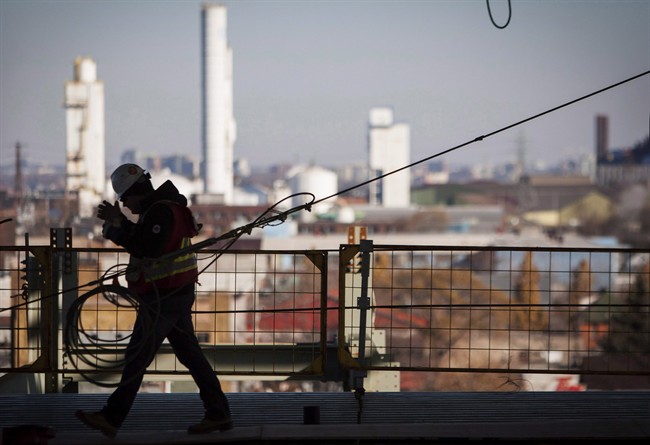TORONTO – If you’re feeling nervous about your career in the wake of Canada’s unexpected unemployment rate increase and surprising loss of 45,900 jobs in December, fear not.

Here are five occupations in which there won’t be enough job applicants to meet demand in the next seven years, according to trends in labour supply and demand in Canada.
The five picks are based on the Canadian Occupational Projection System (COPS) put together by Human Resources and Skills Development Canada (HRSDC).
1. Registered nurses and nurse supervisors
2011-2020 projected job openings: 161,992
2011-2020 projected job seekers: 128,671
The COPS data shows that employment growth has been strong for registered nurses and supervisors between 2008-2010 with a low, virtually unchanged unemployment rate.
The number of job seekers won’t be sufficient to fill job openings between 2011-2020 according to their projections, with employment growth and replacement demand “among the highest for all occupations.”
2. Managers in health, education, social and community services
This includes:
• managers in health care
• administrators in post-secondary education and vocational training
• school principals and administrators of elementary and secondary education
• managers in social, community and correctional services
2011-2020 projected job openings: 66,981
- Canadian man dies during Texas Ironman event. His widow wants answers as to why
- ‘Shock and disbelief’ after Manitoba school trustee’s Indigenous comments
- Several baby products have been recalled by Health Canada. Here’s the list
- ‘Sciatica was gone’: hospital performs robot-assisted spinal surgery in Canadian first
2011-2020 projected job seekers: 52,247
While the unemployment rate in this category increased slightly in 2008-2010, it remained low at 3.3 per cent according to the COPS data. The average hourly wage is among the highest of all occupations, and employment growth was strong.
From 2011-2020, this field’s retirement rate will be one of the highest among all occupations, largely due to older workers and earlier retirements compared to other jobs.
3. Medical technologists and technicians (except dental health)
This includes:
• medical laboratory technologists and pathologists’ assistants
• medical laboratory technicians
• animal health technologists
• respiratory therapists and clinical perfusionists
• medical radiation technologists
• medical sonographers
• cardiology technologists
• electroencephalographic and Other Diagnostic Technologists, n.e.c.
• other medical technologists and technicians (except dental health)
2011-2020 projected job openings: 40,304
2011-2020 projected job seekers: 41,321
This field’s unemployment rate was one of the lowest among all occupations, and remained virtually unchanged over the 2008-2010 period.
Despite the higher number of job seekers projected above, employment growth over the next few years will be “sizeable” because of the aging population.
“The arrival of new medical technologies and techniques, as well as the introduction of more advanced equipment, will require more technologists,” according to the COPS data.

With Canada’s aging population, Statistics Canada’s Lahouaria Yssaad said it’s no surprise that there will be lots of job openings in the health care sector.
“Healthcare and social assistance have been on a long-term upward trend,” she said.
“So if there is one industry that can increase its workforce, understandably that would be healthcare.”
But there are other fields needing more applicants, as well.
4. Architects, urban and land use planners, land surveyors
2011-2020 projected job openings: 13,378
2011-2020 projected job seekers: 12,628
This occupational field saw more rapid employment growth than in other occupations over the 2008-2010 period, maintaining its low unemployment rate. While the hourly wage was lower than other jobs in natural and applied sciences, the average hourly wage increased quickly.
“Nearly all job openings will arise from retirements, despite a retirement rate similar to the average for all occupations,” said the COPS data, noting this occupation recently experienced a labour shortage.
A recent Quartz report paints a different picture in the U.S., where the unemployment rate for architecture and construction majors was 8 per cent, “likely related to the fate of housing-related sectors following the housing bust,” wrote Roberto A. Ferdman.

5. Construction managers, residential home builders and renovators, transportation managers
2011-2020 projected job openings: 96,934
2011-2020 projected job seekers: 102,568
From 2008-2010, the number of job seekers was insufficient to fill job openings, though the unemployment rate increased slightly (still very low at 2.9 per cent in 2010).
In that time period, the average hourly wage increased much more quickly than the average for all occupations, according to COPS data.
Despite a higher number of projected job seekers, it’s projected there won’t be enough managers in construction and transportation to fill openings in the 2011-2020 period, partly due to a higher than average retirement rate.
The COPS data notes that construction has been a “major driving force in the creation of jobs nationally since the start of the decade,” particularly due to new housing units, home renovation projects and non-residential construction spending increases in the energy sector.
The aging population will mean decreased demand for new housing units, but the trends suggest non-residential construction will support this industry.
“Major investments in the energy sector in Quebec (hydro-electric dams), in Ontario (nuclear power plants), and in Alberta (oil sands and pipelines)” signifies that “non-residential investments will be the driving force behind job creation in the construction industry.”


Comments